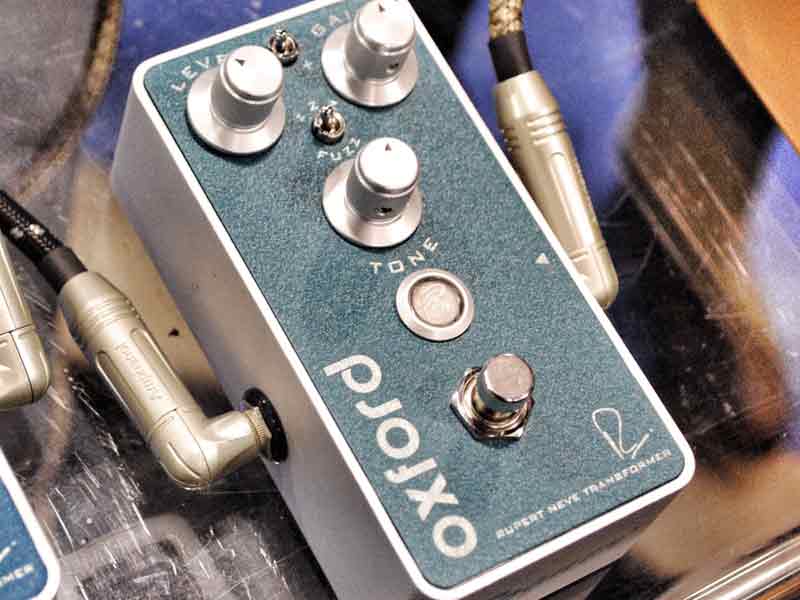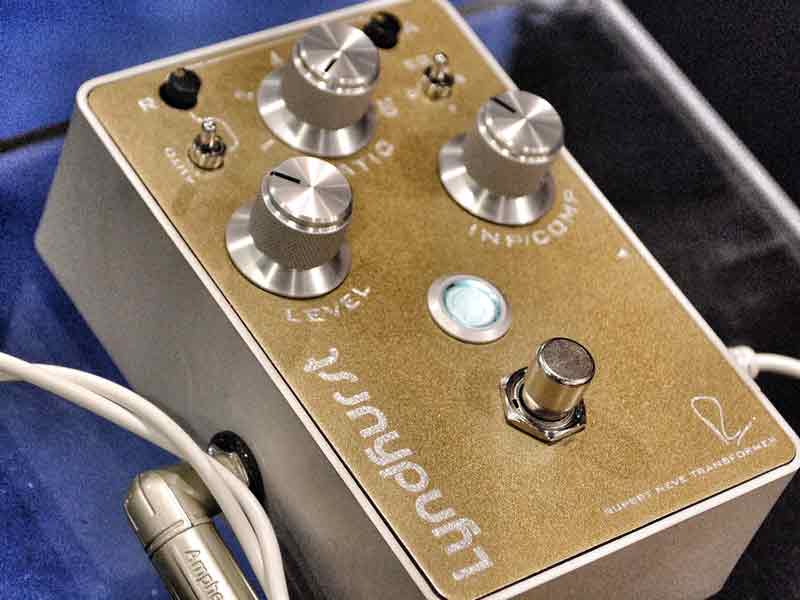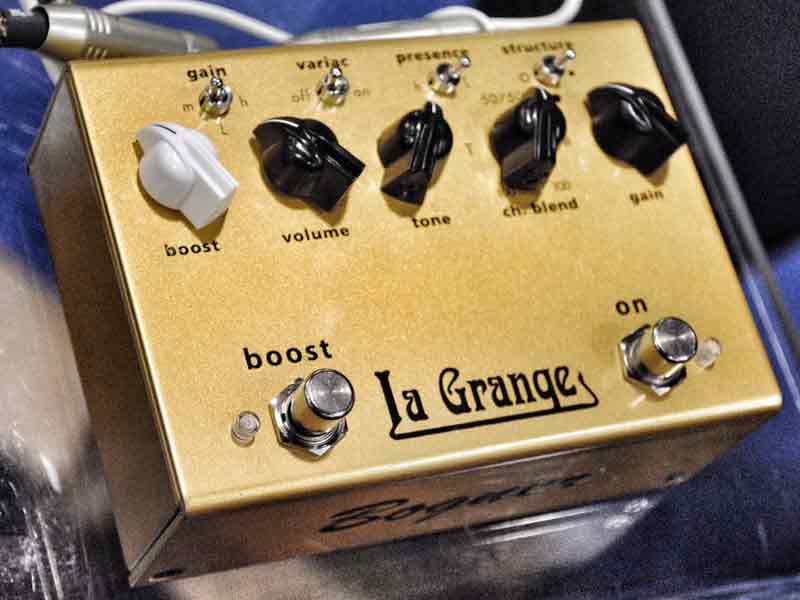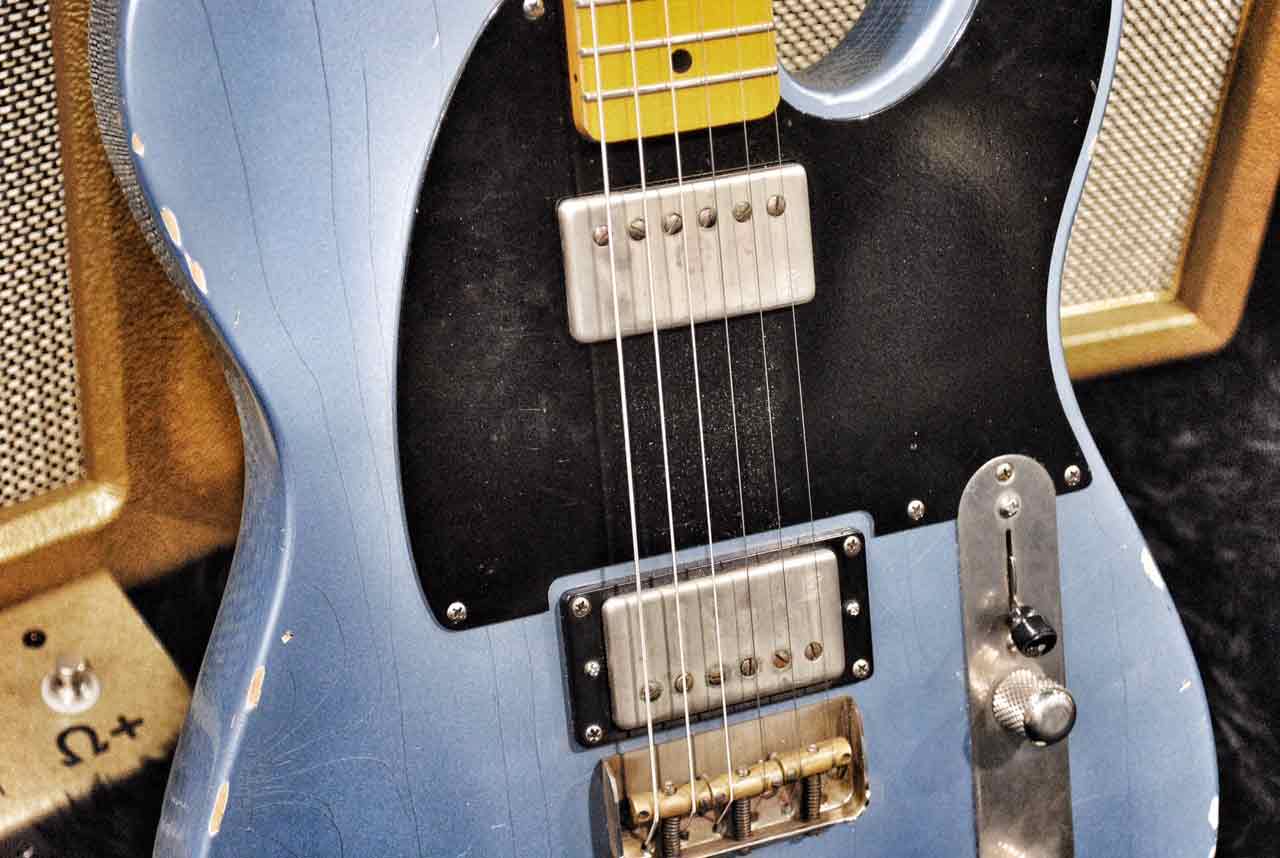NAMM 2015 guitar diary: Bogner on tone
Renowned amp and effect desioner on his new pedals and breaking into pickups

Oxford fuzz
NAMM 2015: Reinhold Bogner is one of the most talented, and colourful, figures in amp and effects design.
From boutique tone monsters such as his formidable Uberschall amp to high-quality, intelligently designed drive pedals, he's a big fish in the pond of tone.
We swung by the Bogner stand to find him chatting with top guitarists such as 'King of the Strat' virtuoso Thomas Blug and Phil X, Bon Jovi's touring guitarist.
New trio
With a trio of new effects to show off we asked Reinhold what they're all about - and learned why he's now started making pickups. But first let's hear about those pedals.
"So basically, the Oxford is a fuzz and the Lyndhurst is a compressor. Those two have Rupert Neve designed transformers, so they all have transformers in the audio path. The Oxford fuzz can go from almost like a mild, dark overdrive to super-crazy fuzz between the switches," Reinhold explains.
"I call it something like a silicon magneto fuzz because the transformer is a big part of how it distorts. There is no Germanium in there - because that stuff is just too temperamental: it sounds great when it sounds great. But it can be all over the place and not really stable, so it didn't make much sense for me to make a product that's sometimes [tonally unstable]."

Lyndhurst compressor
"We had something like this at the show last year but we never came out with it and in fact we've totally redesigned it now. It was a lot of work, but it's kind of new territory to do a compressor. So this is kind of a compressor with a Rupert Neve transformer in it.
"It's flexible but we also try to keep it somewhat simple so there's an automatic mode where you can get rid of [some of the more sophisticated controls] and just have three knobs and EQ, so you can dial in a sound really quickly.
"But if you want to get more surgical about it, with the attack and release and so on then you have a second layer of controls. But a lot of people don't even know how to set up a two-knob compressor. So we made it so it works for both.

La Grange drive pedal
"And then there's the La Grange pedal, which we also we showed last year but we totally weren't happy with it so we've now spent much more time on it and this is along the lines our earlier Ecstasy and Uberschall pedals.
"Kind of amp-based pedals. Well, this one is Marshall-esque. That's why it's gold, you know. The name is from the ZZ Top song. So it gets you all those kinds of sounds, from bluesy to harder stuff. It has quite a bit of gain if you want it to.
"There's a cool feature on the back where you can plug in a low-impedance volume pedal. It doesn't really go through it, it just needs two cables. And you can control the gain with the foot control, so that is cool - that's new.
Three characters
"And then there's three different characters of sound. One is tighter, one is more open, one is full. And then this is kind of the channel - you now like on a Plexi you have a bright channel and a bass channel?
"So you can get the brighter, tighter sounds over here and then fatter tones and anything in between. It has a presence, a variac, similar to features seen on other pedals.
"There is an overall gain and then there is a boost control which is separate boosting - that's the white knob and that's why it's kind of marked like it's another thing to kick in the volume for the solo."

Bogner PAF-style pickups
"This first line of pickups is like PAF-style: very open and on the lower side output-wise so they're very open and let you hear the guitar.
"There's not too much colour - what you hear acoustically from the guitar you want to hear amplified and let the amp do the rest. So they're very touch-sensitive and open-sounding.
"There's two different magnets in the neck and bridge pickups: AlNiCo V in the bridge and AlNiCo III here in huge neck. This is the first set we're putting out but we we'll get some other ones too. It's a new thing for us, you know?"
Jamie Dickson is Editor-in-Chief of Guitarist magazine, Britain's best-selling and longest-running monthly for guitar players. He started his career at the Daily Telegraph in London, where his first assignment was interviewing blue-eyed soul legend Robert Palmer, going on to become a full-time author on music, writing for benchmark references such as 1001 Albums You Must Hear Before You Die and Dorling Kindersley's How To Play Guitar Step By Step. He joined Guitarist in 2011 and since then it has been his privilege to interview everyone from B.B. King to St. Vincent for Guitarist's readers, while sharing insights into scores of historic guitars, from Rory Gallagher's '61 Strat to the first Martin D-28 ever made.


